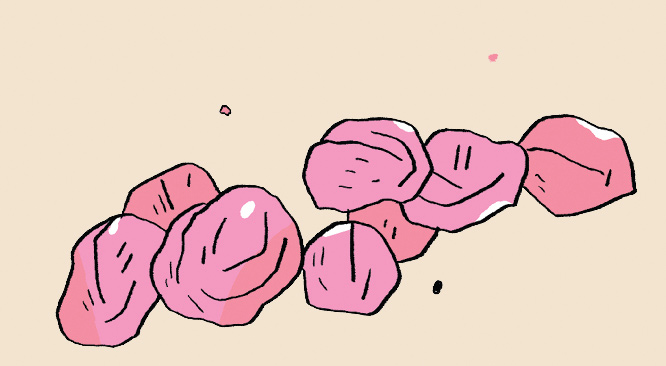RULE 8
Washed coffee isn’t clean. Natural coffee isn’t dirty.
If you like a little bit of funk, you might really like natural coffee.
Because natural-process coffees let the cherry and the seed sit in contact with each other for a long time, the flavors of the fruit do permeate the seed more than with washed coffees. Natural processing is deeply divisive among the upper echelons of coffee professionals, with some tasters disregarding the category entirely as flawed—if natural coffee isn’t produced correctly, the fruit can rot rather than dry, and may leave undesirable flavors in the resulting coffee (we’ve tried cups with notes of rotten banana, and baby diaper).
Washed coffees immediately separate the cherry from the seed, eliminating the potential for this contamination. There’s also something to be said for the obvious association between “washing” and cleanliness!
But if you like a little bit of funk, you might really like natural coffee, and natural process is enjoying a resurgence in recent years thanks to coffee buyers and roasters who champion this style for its low ecological impact and the expressive, delicious flavor it can yield in the cup.
Cascara
The coffee cherry isn’t a very satisfying fruit on its own. You wouldn’t want to sit down and eat a bag of coffee cherries on a hot day. Unlike a fleshy Rainier cherry, the coffee cherry is mostly skin and seeds, with a thin layer of sweet, tasty mucilage. In most parts of the world, the pulp is composted or thrown out. In places like Yemen and Ethiopia, however, the skin and husk of the fruit is dried and steeped with herbs and spices to make a unique, tealike drink. Qesher has been enjoyed by Yemenis for centuries.
Central American coffee producers like Aida Batlle of El Salvador experimented with this in the early 2000s and now sell dried coffee skin, or cascara, to importers. The dried fruit can be steeped like tea and has a distinct fruit-forward flavor. Depending on the quality of the coffee and the processing, it can take on notes of mandarin or jasmine, or hints of earth and tobacco.
Inventive chefs have started experimenting with cascara as a food product (look for cascara butter, cascara jam, and cascara flours in specialty shops), mixologists use cascara syrup for new-wave cocktails, and enterprising energy drink brands have expressed interest in it. Cascara is a trend on the rise.
JORDAN AND ZACHARY’S SUPER SPECIAL CASCARA TEA
SERVES 2
Little-known fact: When we launched Sprudge in 2009, we were hopped up not on coffee, but on cascara! Here’s the recipe for the brew we drank that fateful day.
1¼ tablespoons / 20 g cascara (a generous scoop)
1½ cups / 350 g water, heated to 208°F
Teaspoon wild honey
Combine cascara, water, and honey in a chemex or other heatproof glass container. Steep for 5 minutes, then strain. Serve hot, or cool to room temperature and serve over ice.
NOTE: Not to be confused with the herbal supplement cascara sagrada, cascara tea is sometimes sold as “brewable coffee fruit.”
